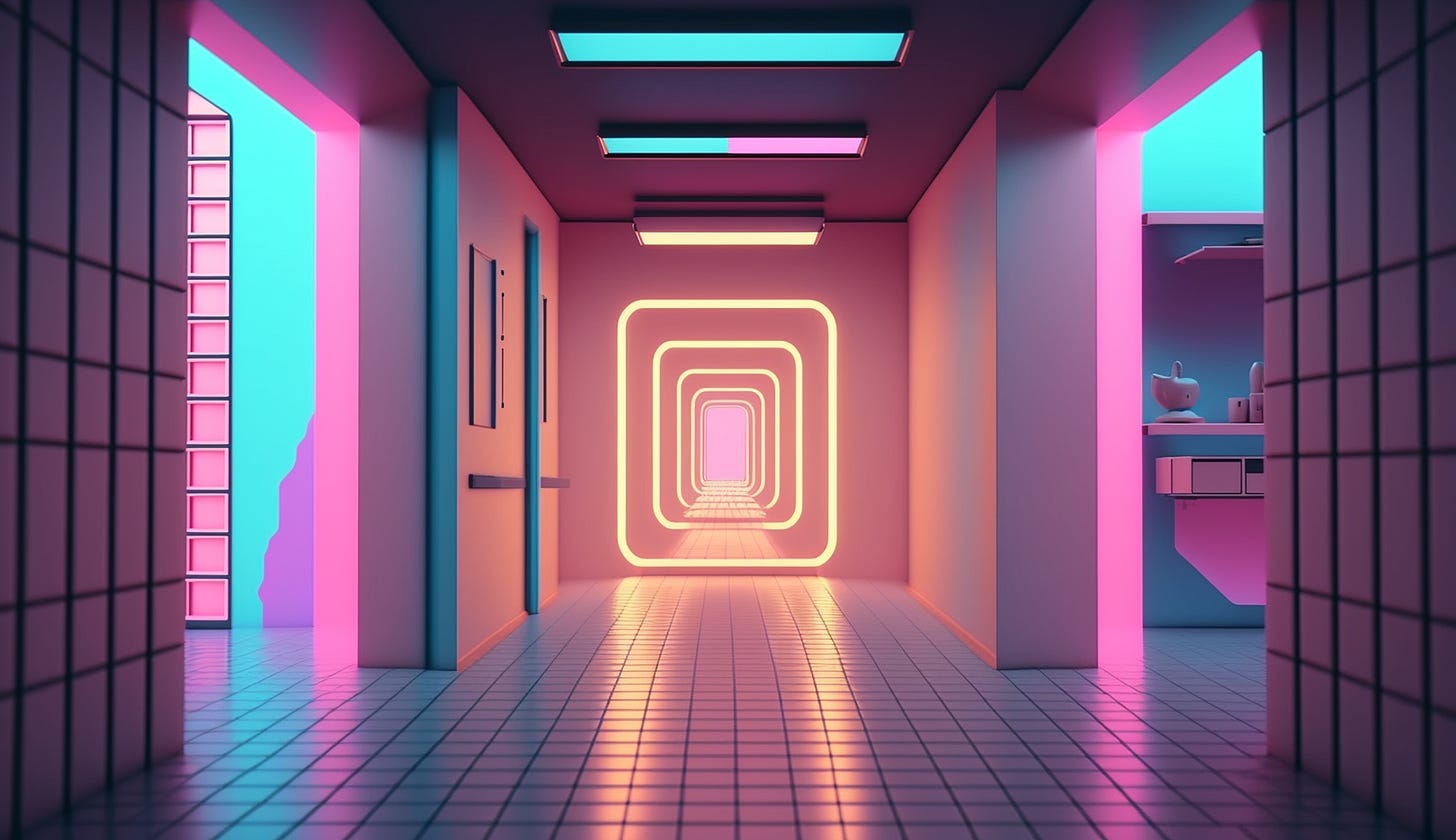Jasmine Bina | January 26, 2024
The Eternal Now Edition
On cultural loss, icons, and the death of the five-year-plan.
Jasmine Bina (JB) is a cultural futurist and CEO of Concept Bureau, a brand strategy agency. She's also co-founder of Exposure Therapy, a community for strategic minds. She lives in LA with her family and has recently taken up archery.
Jasmine here. Many of our most impactful cultural images have also been the most fleeting. Cowboys, beatniks, the Oregon Trail, the nuclear family — none lasted more than thirty years at full strength, but all still influence us today despite being relative blips on the timeline of American history. Not only did each become a touchstone to describe years past, they also maintained an emotional throughline that allowed them to be remixed, engendered, and nurtured within each generation that came after them.
It’s hard to imagine what the emotional anchor of the past decade will be in hindsight, though. Will it be January 6th, celebgate, social distancing, any number of wars, millennial burnout, Greta Thunberg, or the year of the girly?
I doubt most, if any, of those will make the cut, despite how resonant they may have felt at the time. Since the Internet took hold of much of our social lives, our culture has become bloated, fractured and stuffed into echo chambers. At the same time, we have been living through an unprecedented amount of change in a condensed period – not just technological, but political, environmental, social, and personal.
Extended periods of stress and accelerated change don’t just warp our sense of time, they crumble it, severing our ability to have faith in the playbooks of the past but also to make assumptions about the future.
Why is this interesting?
We already know that uncertainty awaits us on the horizon. It always has to some degree, but what’s startling is the fact that more than ever, we are struggling to look forward, even just a few years ahead. The belief systems that have compelled us to invest in the future since the dawn of America are being upended by the YOLO economy; standbys like developing a “five-year plan” are dying.
This severing from the past and the future directly impacts our sense of self. Who you are right now is a triangulation of who you’ve been and who you will become. Without a deep connection to that timeline, it’s hard to know your present—a sense of self is tenuous when you don’t know what direction to look in. The ephemeral, hard-to-grasp present is all we have to define ourselves by. Now that we are unmoored from these shared histories and visions of the future, we can no longer rely on old playbooks or assumptions, complicating our ability to make personal decisions and interpersonal connections.
That is how we’ve become stuck in what I call the eternal now.
Gabor Mate tells us that loss of self is the essence of trauma, and I think that’s a fair way to characterize what the eternal now feels like for many. When #liminalspaces and #nostalgiacore became trends over the past couple of years, it wasn’t just the sense of longing that made them arresting aesthetics. It was the disembodiedness of it all.
This feeling of estrangement is broadly called temporal disintegration—feeling outside of time —and it’s a unique loss that goes beyond the boundaries of healthy, personal growth. It’s the sudden realization that our acute, stressful life experiences have interrupted our connection to the past, making the comfort of our own histories emotionally inaccessible.
The same challenges exist in trying to plan for our futures. People are impulse spending no matter how high interest rates and cost of living go, baffling economists and financial advisors. The very human reasoning behind it all tells us what economic principles can’t: consumers don’t fear regretting purchases. They fear regretting not making purchases, because who knows what tomorrow will bring.
When the public’s mentality changes in such a material and fundamental way, all of the structures that sit on top of it have to be rebuilt. As a cultural futurist, I see this in my work as companies fail to connect with audiences when they make tired nods to nostalgia or try to appeal to people’s aspirations. The challenge might look different in your field; maybe it’s something you’ve noticed in your friendships and families, too.
We are all experiencing the time crushing aftermath of a tumultuous world. To make sense of things today requires planting your feet decisively in the present and meeting people exactly where their heads are — in this eternal now. (JB)
—
Thanks for reading,
Noah (NRB) & Colin (CJN) & Jasmine (JB)
—
Why is this interesting? is a daily email from Noah Brier & Colin Nagy (and friends!) about interesting things. If you’ve enjoyed this edition, please consider forwarding it to a friend. If you’re reading it for the first time, consider subscribing.
